![]() On Monday, May 2, 2022, Miguel Cardona, U.S. Secretary of Education Miguel Cardona and U.S. Senator Tim Kaine (D-VA) kicked off Teacher Appreciation Week at Armstrong High School in Richmond, Virginia. As the State Director for Career, Technical, and Adult Education for the Commonwealth of Virginia, I am reminded almost daily of the challenges school division administrators face to fill vacancies throughout the entire teaching profession. Filling teacher vacancies, particularly in critical needs areas, like Career and Technical Education (CTE), is mission critical to meet workforce demand. I was excited for Virginia to be chosen as a model to highlight the urgent need for a robust educator workforce, and how CTE programs with robust supports that bridge secondary and postsecondary institutions can fill that need.
On Monday, May 2, 2022, Miguel Cardona, U.S. Secretary of Education Miguel Cardona and U.S. Senator Tim Kaine (D-VA) kicked off Teacher Appreciation Week at Armstrong High School in Richmond, Virginia. As the State Director for Career, Technical, and Adult Education for the Commonwealth of Virginia, I am reminded almost daily of the challenges school division administrators face to fill vacancies throughout the entire teaching profession. Filling teacher vacancies, particularly in critical needs areas, like Career and Technical Education (CTE), is mission critical to meet workforce demand. I was excited for Virginia to be chosen as a model to highlight the urgent need for a robust educator workforce, and how CTE programs with robust supports that bridge secondary and postsecondary institutions can fill that need.
This event highlighted the Richmond Teacher Residency (RTR) program. The teacher residency program is very similar to an apprenticeship. The power of the model was demonstrated during this visit, where multiple graduates shared the impact of this program for their career.
Despite overwhelming research that teacher quality is the most important school-based factor in student achievement — and that teacher impact on student learning is cumulative and long-lasting — historically marginalized students are typically taught by the least prepared, least experienced, and least effective teachers. RTR addresses this issue by preparing and retaining high-quality teachers to ensure that every student gets a quality education.
RTR is a school-based teacher preparation program that integrates research with practice to equip participants, known as residents, with the knowledge, skills, and experience to be effective in high-needs and hard-to-staff classrooms. Participants emerge with a graduate degree in education from Virginia Commonwealth University (VCU), a teacher’s license, and a full year’s experience with a strong mentor teacher. Tuition is fully covered, and residents receive a $5,000 stipend with additional stipends available for those teaching in science and math fields.
The outcome? Residents who are ready to step into the classroom as impactful teachers. Residents who are ready to take student learning to the next level. Residents who are ready to lift up communities — one classroom at a time. This program requires at least a three year commitment. One student highlighted has remained with his school for ten years.
In 2011-2012, the program began as the Richmond Teacher Residency Program serving only Richmond City Public Schools. In 2018, the program’s name was changed to RTR as it expanded outside of Richmond city boundaries. With RTR, learning knows no boundaries. Now, RTR is serving four Virginia school divisions: Chesterfield County Public Schools, Henrico County Public Schools, Petersburg Public Schools and Richmond City Public Schools.
Our partnership with VCU will continue to grow. Up to this point, VCU has only offered a graduate level teacher residency program. VCU has not started at the high school level yet, but other states have through their teachers for tomorrow and educators rising programs. These classes are an introduction to teaching. Some instances have dual enrollment, so the credits can then apply to a degree in education. Currently, VCU is working on an undergraduate residency program where students would be in a school for a full year while they are getting their degree. I would love to see this program incorporated at the secondary level through Virginia teachers for tomorrow and educators rising.
According to Kim McKnight, Director of the Center for Teacher Leadership at Virginia Commonwealth University and executive director of RTR Teacher Residency, the program is only as strong as your weakest resident or mentor teacher, so it is critical to do an extensive interview, application, and matching process. Residents are the next generation of teachers and mentors grow a teacher in their classroom, so it is important they are both properly trained and have the dispositions needed for a career in education. A lesson learned is a shared cost investment from school divisions, state funding, local philanthropy and any other business partners will help for long-term financial sustainability. This model began with large federal grants but a shared cost is critically important.
Highlighting a program like RTR was a great way to kick off Teacher Appreciation Week in Virginia. As a relatively new CTE state director, it does not take long to figure out the importance of partnerships from secondary, postsecondary, higher education, and business and industry. Virginia is very fortunate to have the support from Senator Tim Kaine. Sen. Kaine is not only a supporter of RTR from its inception but a clear advocate for Career and Technical Education, understanding its role in meeting future workforce demand throughout the Commonwealth and beyond.
Visit the RTR Residency web page for more information about the program.
David Eshelman, Director, Office of Career, Technical, and Adult Education, Virginia Department of Education
Kim McKnight, Director of the Center for Teacher Leadership at Virginia Commonwealth University and Executive Director, RTR Teacher Residency


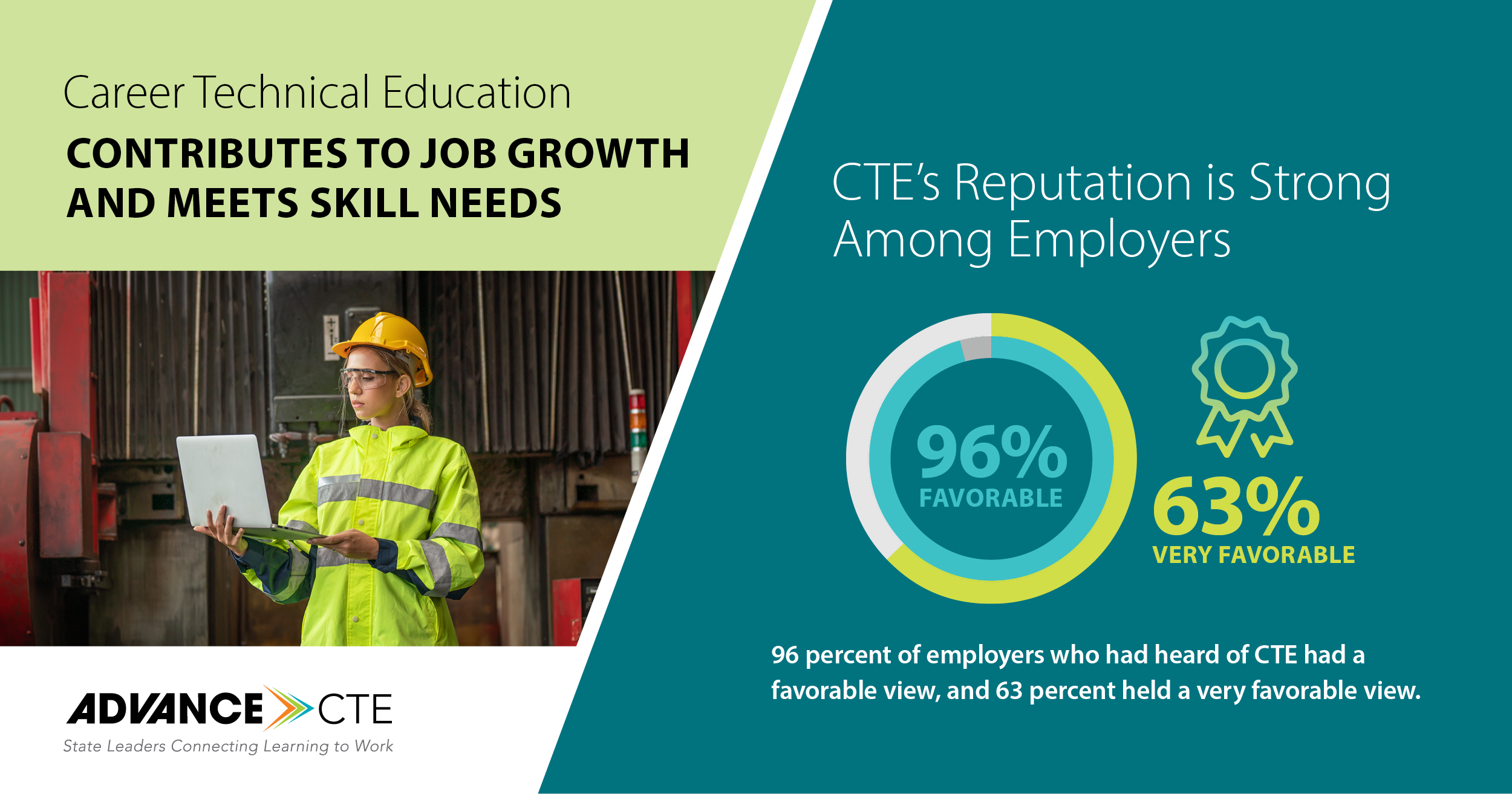 Today, Advance CTE released
Today, Advance CTE released 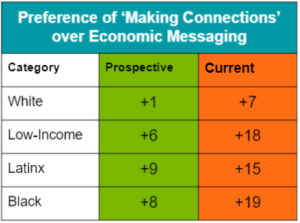 These findings have important implications for how CTE can close equity gaps, as well as what aspects of CTE should be elevated when conducting outreach to historically marginalized populations. Communications should be specific about the equitable opportunities provided through CTE to prepare for and jumpstart postsecondary education, as well as to gain visibility and networks through connections and hands-on experiences with like-minded educators, peers and employers .
These findings have important implications for how CTE can close equity gaps, as well as what aspects of CTE should be elevated when conducting outreach to historically marginalized populations. Communications should be specific about the equitable opportunities provided through CTE to prepare for and jumpstart postsecondary education, as well as to gain visibility and networks through connections and hands-on experiences with like-minded educators, peers and employers . 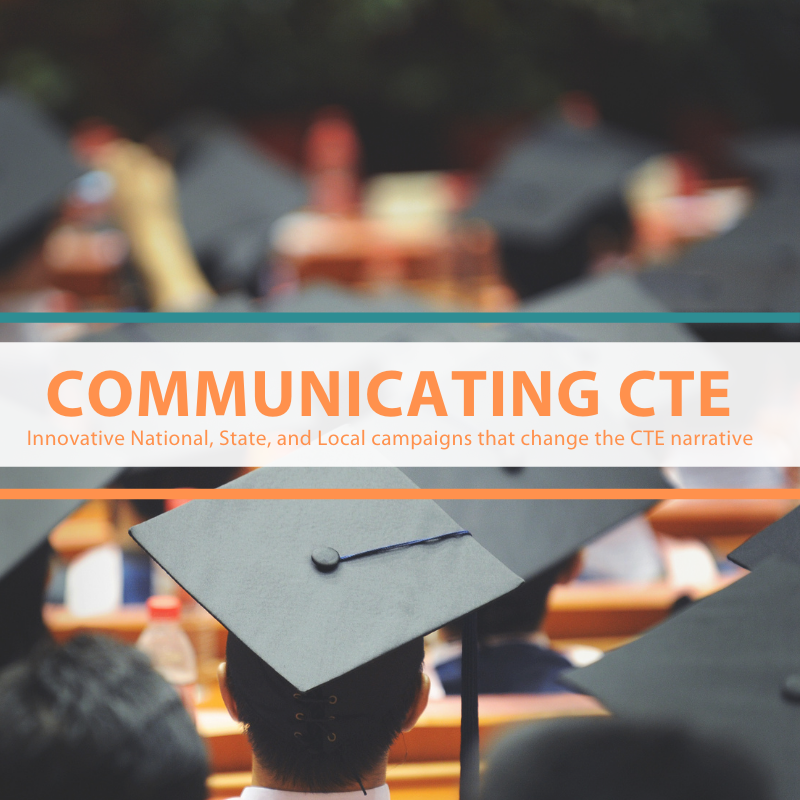 In April 2021, Advance CTE released
In April 2021, Advance CTE released 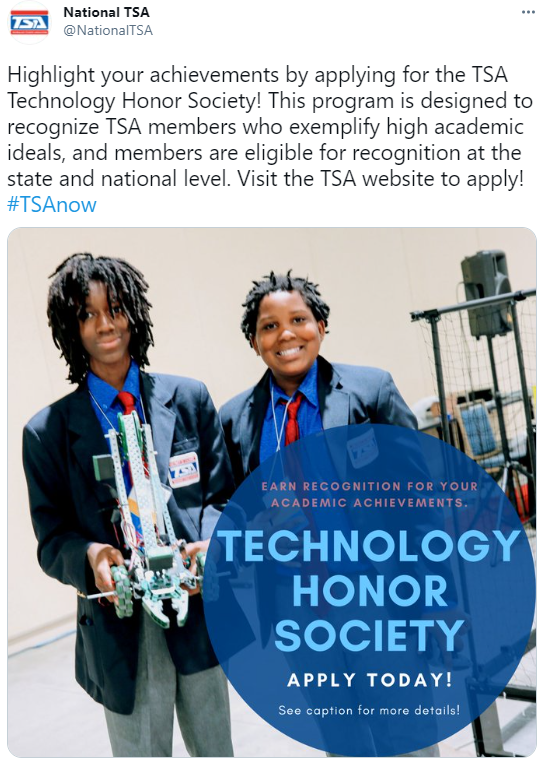 With a focus on recruitment and retention, it is important for learners and families of CTE to see success stories of individuals who look like them and share similar educational, racial, socio-economic, gender and geographic backgrounds.
With a focus on recruitment and retention, it is important for learners and families of CTE to see success stories of individuals who look like them and share similar educational, racial, socio-economic, gender and geographic backgrounds. Families and learners both participating in and considering CTE highly value an education experience that allows learners to explore opportunities after high school that lead to college and career success. In this example, Utah used graphics of learners engaging in real-world skills training to promote its Auto Mechanics and Repairs career pathway. This is a way of demonstrating the connection from CTE courses, work-based learning settings and youth apprenticeship programs to career success.
Families and learners both participating in and considering CTE highly value an education experience that allows learners to explore opportunities after high school that lead to college and career success. In this example, Utah used graphics of learners engaging in real-world skills training to promote its Auto Mechanics and Repairs career pathway. This is a way of demonstrating the connection from CTE courses, work-based learning settings and youth apprenticeship programs to career success.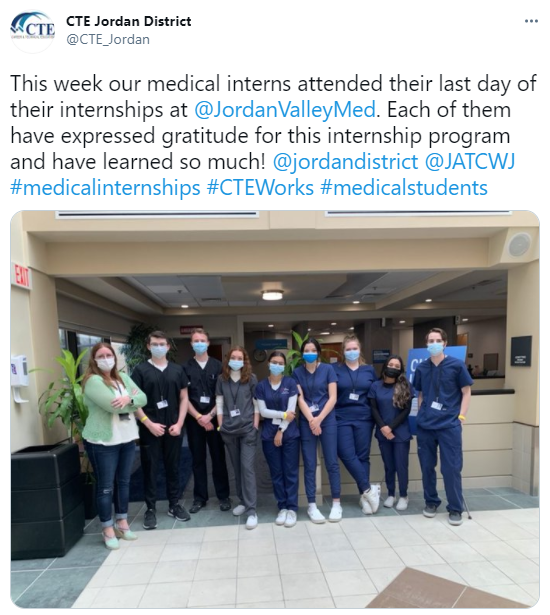 Using local examples can help explain the nuts and bolts of how CTE delivers success by making the connection between CTE and a specific career or industry, as well as highlighting partnerships with local colleges and employers that are recognizable to parents/guardians and learners.
Using local examples can help explain the nuts and bolts of how CTE delivers success by making the connection between CTE and a specific career or industry, as well as highlighting partnerships with local colleges and employers that are recognizable to parents/guardians and learners.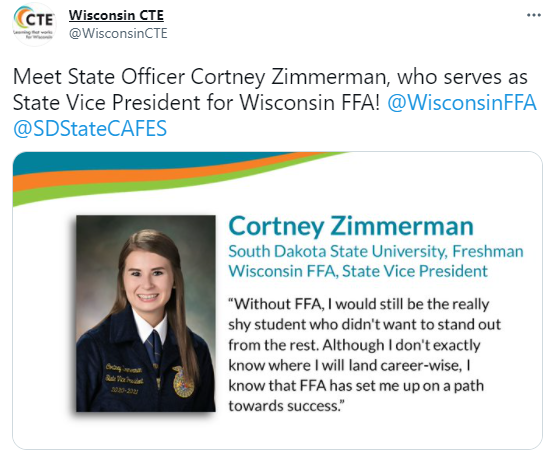 Wisconsin CTE showcased CTE to parents/guardians and learners by lifting up student success stories. One avenue to find compelling learner examples is to coordinate with statewide or local Career Technical Student Organizations (CTSOs) and gather testimonials, photos and stories to share on social media. This tweet focused on a local learner success story to create human interest in CTE. To help expand the reach of this tweet, Wisconsin CTE used relevant hashtags and tagged the state CTSO and the university the learner was attending. This type of post is a great way to highlight CTE and the many ways CTE benefits learners.
Wisconsin CTE showcased CTE to parents/guardians and learners by lifting up student success stories. One avenue to find compelling learner examples is to coordinate with statewide or local Career Technical Student Organizations (CTSOs) and gather testimonials, photos and stories to share on social media. This tweet focused on a local learner success story to create human interest in CTE. To help expand the reach of this tweet, Wisconsin CTE used relevant hashtags and tagged the state CTSO and the university the learner was attending. This type of post is a great way to highlight CTE and the many ways CTE benefits learners. 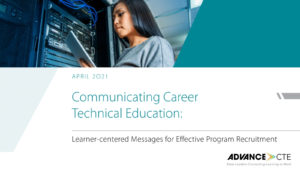 Today, Advance CTE released a
Today, Advance CTE released a 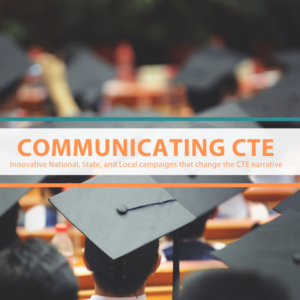
 Now on its fourth version, the fact sheets are used by the Governor’s Office, legislators, and employers, and many advocates have come to rely on this resource. “I just had an administrator call me last week asking when the new local fact sheets would be available because they wanted to use them in a school board presentation saying ‘We really need them’, shares Longhurst. “Our resource has a little bit for everyone that is involved in CTE, and it is gratifying to see that data and transparency is valued.” She hopes that as the state’s CTE data system capabilities expand that a dashboard and additional data points will be available to identify more successes and areas for growth.
Now on its fourth version, the fact sheets are used by the Governor’s Office, legislators, and employers, and many advocates have come to rely on this resource. “I just had an administrator call me last week asking when the new local fact sheets would be available because they wanted to use them in a school board presentation saying ‘We really need them’, shares Longhurst. “Our resource has a little bit for everyone that is involved in CTE, and it is gratifying to see that data and transparency is valued.” She hopes that as the state’s CTE data system capabilities expand that a dashboard and additional data points will be available to identify more successes and areas for growth. 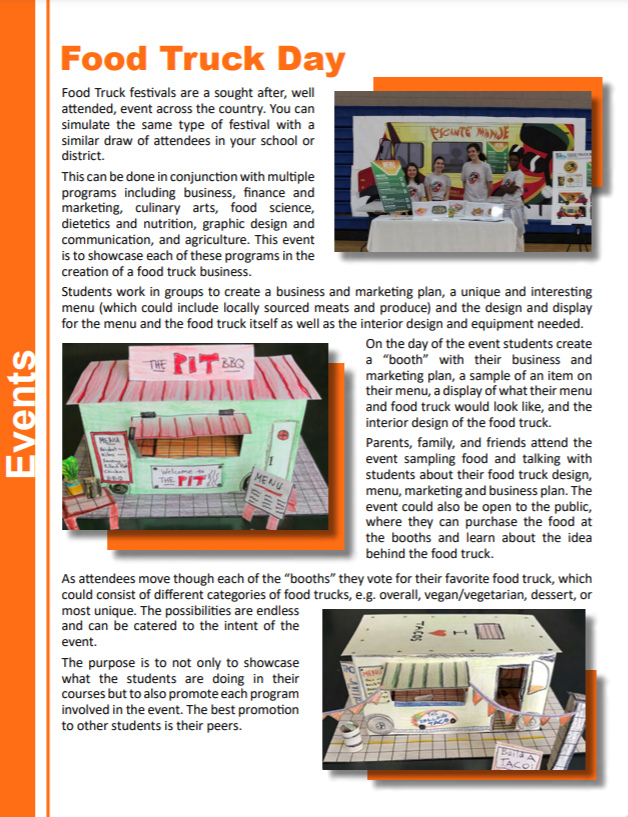


 The Get There communications toolkit provides a variety of materials produced by the Florida Department of Education that are ready-made for postsecondary institutions, but also provides files that allow institutions to customize the materials to meet their unique needs. The toolkit was made with small schools in mind that may not have the staff or resources to develop a large-scale marketing campaign. The
The Get There communications toolkit provides a variety of materials produced by the Florida Department of Education that are ready-made for postsecondary institutions, but also provides files that allow institutions to customize the materials to meet their unique needs. The toolkit was made with small schools in mind that may not have the staff or resources to develop a large-scale marketing campaign. The 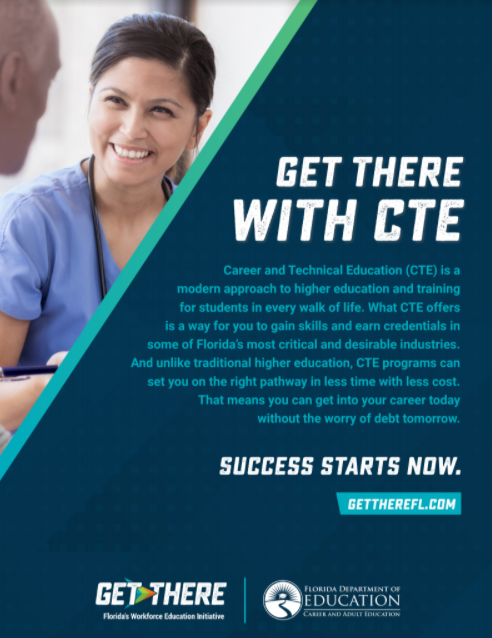 A System-Wide Partnership
A System-Wide Partnership